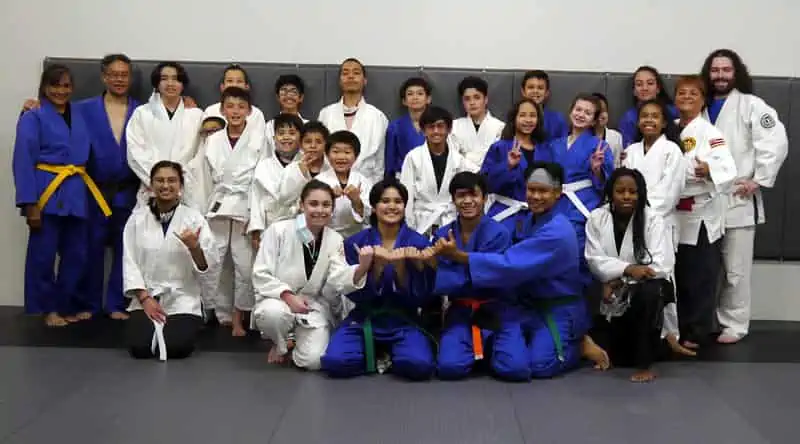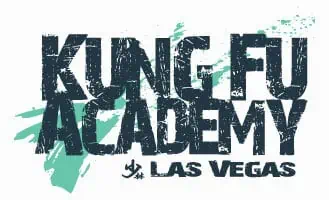Judo classes develop your self-confidence, discipline and a type of wrestling fitness that cannot be achieved any other way
The ultimate goal of Judo, like all other martial arts, is not to develop mastery over others, but rather mastery over oneself.
Judo classes in Las Vegas
Judo is the gentle art.
Seriously.
The literal translation of the word "Judo" translates directly from Japanese into the gentle way. Now, think about this, why would such an explosive martial art be called the "gentle way"?
It's important to realize, it has to do with the concept of seiryoku zen’yō, this translates as maximum efficiency, minimum effort.

Judo is not about brute strength
Judo is an art that takes aggression and force and transforms it.
For example, in Judo it is entirely possible for a smaller weaker player to beat a significantly larger and stronger opponent. However, if the smaller Judoka were to directly resist the larger opponent, they would most likely meet with defeat.
In fact, if the smaller opponent were to evade the initial attack, redirect the momentum, then switch directly into offense, they could achieve victory.
After all, why even learn martial arts, if the bigger stronger opponent is always supposed to win?
What to expect when you enroll in our Las Vegas Judo classes
As you can imagine...
Before, learning how to throw the first thing you will learn when you start our Judo class is how to fall. This skill of falling in Japanese is called "Ukemi" or break falling.
It's important to realize, this is essential for the SAFE practice of throwing techniques. Our goal is to get you to feel very comfortable being thrown. Because, without this confidence in the ability to fall, you will not try to take the offense in a competitive situation. In fact, you might constantly be defensive and not try to execute any throws. Instead, you might hesitate. Unfortunately, this hesitation leads to defeat competition. It's important to realize, falling takes time to learn no matter what.
Judo Ukemi saved my life
This falling skill will undoubtedly save you at least once in your lifetime. I have known many martial artists in my lifetime, and EVERY single one of them had a story about them falling and then rolling out of it using "ukemi".
Personally, my "ukemi" story starts with me and my friends mountain biking in the forests of Hawaii as a young man. I hit a tree root going at quite a fast speed (I was younger and less wise). My bike stopped cold in its tracks. However, my body did not stop. Before you knew it, I went flying over the handlebars and ended up performing a forward roll out of pure instinct. Luckily, my falling techniques saved my neck. Literally.
The ability to fall gracefully and with control is a daunting task but achievable with constant practice
However, if you were to just learn falling techniques without learning any throws, you would probably quit Judo!
Due to this reason, we start teaching throws from the very first day. You can learn to throw other students who already know how to fall. For beginners, when it is their turn to throw you, they can just practice the entry into the throw without actually throwing you to the ground.
Also, every Judo throw is broken down into 3 parts. It’s like any other large project, you want to break it into parts so you that it's more digestible.
The first part to every throw is the off-balancing, then the entry and finally the finish.
Throughout your training you will come to find out that Judo is an excellent workout. Also, you will slowly be getting into great shape, learning to defend yourself and becoming a self-discipline person!
Some of the things you will learn in Judo Class are:
These are some of the concepts and drill we teach in Judo class.
Judo Throw
Check out
What our students are saying
“
I found what I was looking for here at the Las Vegas Kung Fu Academy
I always wanted to learn Judo. However, I was afraid of getting hurt, feeling lost or overwhelmed.
At other schools I went to, the teacher would show the throw once then say, "Okay, try it". I was looking for a school that would actually teach and instruct the students.
That's when I found what I was looking for. The Las Vegas Kung Fu Academy.
Instructor Kevin really breaks down the moves and give you fine details about the throw. He never rushes through a technique. This is the perfect place for me."
Gary D.
Student
“
Instructor Kevin has made my learning experience a positive one
If there is one thing to say about judo, it's that if you stick with it, the reward will be great. At first, learning judo is difficult on our body. The constant falling then getting up and repeating the throw can be a bit overwhelming at first. When I did my first class I wasn't use to basic warm ups - forward rolls, back ward rolls, and break falls. I felt dizzy and my body ached the next day. I knew this was to happen. It's what I do after is what's important. Either I quit and say it's too hard?
Or, I continue knowing it will get easier.After a year, I am still here! Yes, I stuck with it. There have been many positive changes In Life. I am now able to do the warm ups with ease. I am not afraid to fall. Instructor Kevin has made my learning experience a positive one. His way of teaching really makes you understand the basics of judo and the important parts of a throw. I like how he's able to breakdown a Judo throw and make it into our exercise and warm up part of class.
Nelson K.
Student
“
Instructor Instructor Isaac is very well-rounded in several systems of martial arts.
I've been looking to find a good school for Judo since I am Japanese and wanted to get closer to my roots. The thing that stands out to me about the Kung Fu Academy is the culture. It’s like a family where everyone is there to help each other to grow and progress.
I definitely recommend this studio to those who want to learn martial arts for self-defense because everything they teach is practical and usable in real-life fights.
Adam G.
Student
Interested in just Judo Classes?
Most people who just want to learn one style don't mesh well with the culture here at our studio. We always emphasize that all styles have limitations. Keep an open mind.
FAQ
We've tried to answer any questions you might have about our Judo Classes but if we've missed something you can always call us at 702-336-1095.
The main differences between the two is that, Judo places a great emphasis on take-down techniques and throws whereas, Brazilian JuJitsu places much more emphasis on groundwork when competing, In a typical Judo school 80% of training time is devoted to standup throws while in a typical BJJ school 80% of the training time is devoted to groundwork. The emphasis on different aspects of grappling is because, the scoring or rules of the each individual style is radically different.
Both Judo and Jiujitsu are martial arts (realistic self defense). However, both martial arts styles can also be practiced as a combative sport, meaning that students compete against one another. Both Judo and Jiu Jitsu emphasize free sparring against other student that are resisting and also attempting offensive techniques. Free sparring in Jujitsu is known as rolling. Free sparring in Judo is known as Randori.
This free sparring does not include striking or kicking but does include throwing, joint-locking and choking techniques to be used. When sparring with joint-locking and chocking techniques, Safety is a main concern and typically, when caught in a submission technique, students use either a verbal or physical message to dictate that they are no longer able to continue and would like to yield (to tap-out)
In the 1800s Judo was "invented" by a man named Jigoro Kano.
Jigor Kano wasn't a very big man. As a child, He was bullied. To learn to defend himself, He endeavored to learn the ancient Japanese art of jiu-jitsu. Kano studied jiu-jitsu under several different teachers in an effort to become as proficient as possible.
You see, Jujitsu was an ancient art designed for the samurai (warrior class) to kill and maim an opponent on the battlefield. Many of the techniques, although practical, was too deadly to practice at full speed and power. Jujitsu was much too dangerous to practice at full speed and power.
So in 1882, Kano started his own school or dojo, which he called the Kodokan. He started modifying the art to be safer, and more efficient. He called his new martial art Judo. His new art had three major tenets: physical education, competitive sparring, and mental discipline.
Yes. First, Judo skills can end a fight quickly if you are ever caught in a physical confrontation. Think of Judo as the art of hitting someone with a largest weapon you can find, the earth itself.
Second, If you can combine judo skills with some striking techniques from other arts, you will be able to defend yourself.
Answer: One of the defining characteristics of Judo is called randori. This competitive wrestling. Competitors throw or submit each other to win the match. Judo is a sport martial art. Many techniques that could maim or permanently hurt an opponent are considered dangerous and are prohibited. Strikes to an opponents vital areas, such as the eyes, throat and groin are outlawed. Judo has set of rules that govern how to compete using the techniques that are permitted.
Here’s what people are saying about our Judo Studio.
“
You couldn't pick a better studio to begin your martial arts journey.
The instructors and students are really positive and want everyone to excel. Whenever I come to class it feels like I'm coming back home. My instructors take there time in teaching everything the right way not the fast way. I can also count on my peers for help as well when I need it. Truly grateful to be apart of this school. Thank you everyone!
Alex Mendina
Student
“
I have been in and around the martial arts for 30 years and can testify that Mr. and Mrs. Kawada are the real deal when it comes to doing AND teaching the martial arts
They embody the Aloha spirit and run their school with a high level of integrity. They balance the old school methods of Asian training with modern 21st century Western methods. They are open minded to learning which makes them open minded when teaching. They can easily adapt the curriculum to any individual's limitations, needs and goals. It did not take me long as a student to realize that this is a place I want to train in as both a student and an instructor for the long term. It is a true Academy - offering expert instruction in several arts besides Kung Fu. It is a wonderful place for kids and they offer Summer Camps, Birthday Parties, and other special events like movie nights for them. It is EQUALLY a wonderful place for adults who are both new as well as experienced in the martial arts. For people who are new, the instructors and students are very patient in working with you as you learn and for those experienced, your experience is valued and respected. As you search for martial arts training for either yourself and/or your kids, it is definitely a school you'd want to put on your list to visit and try out.
